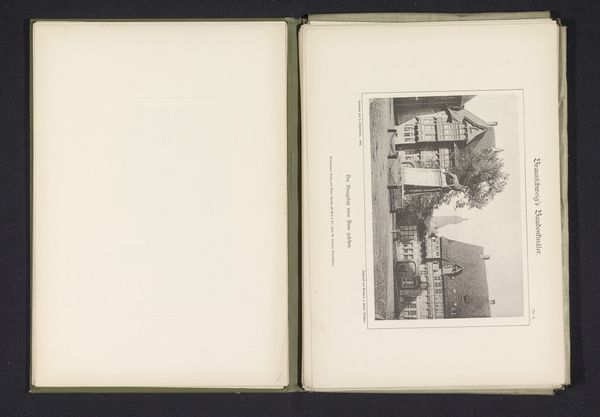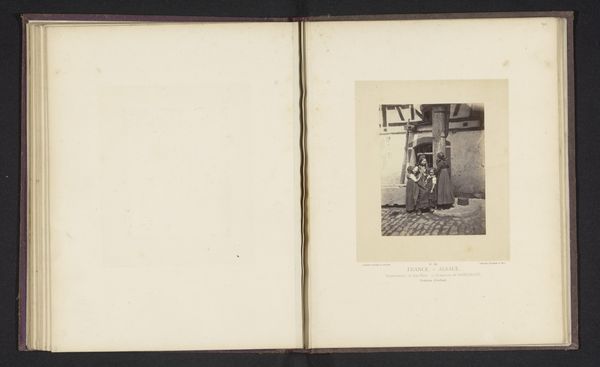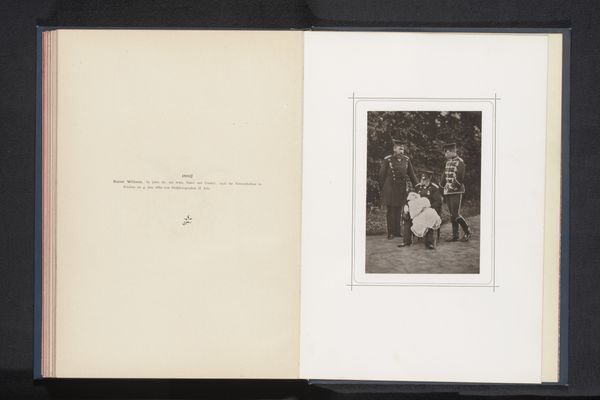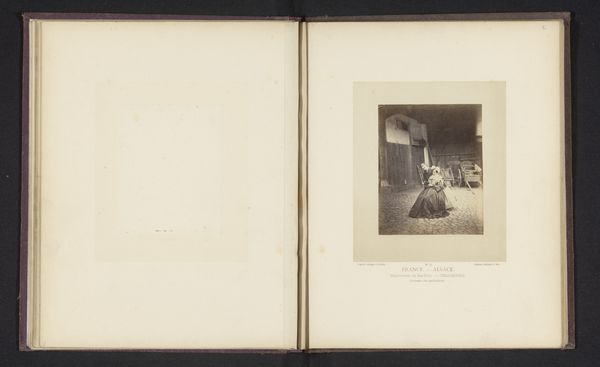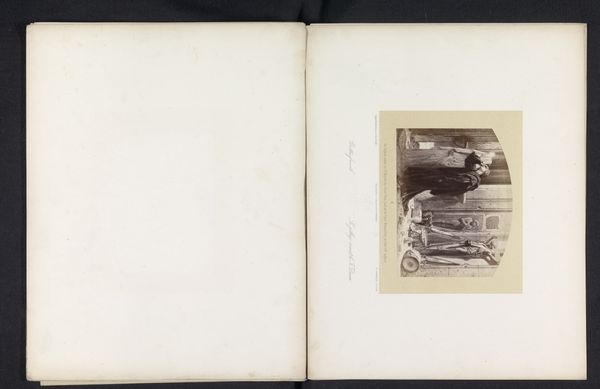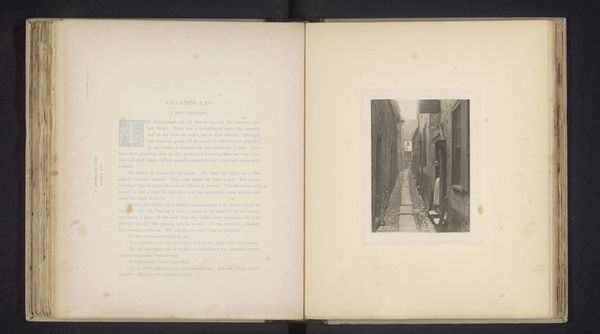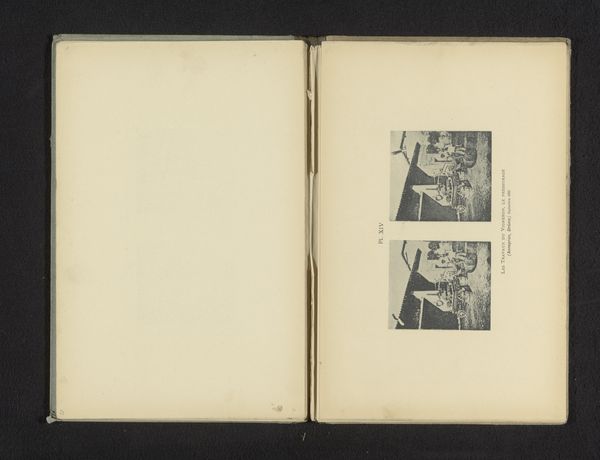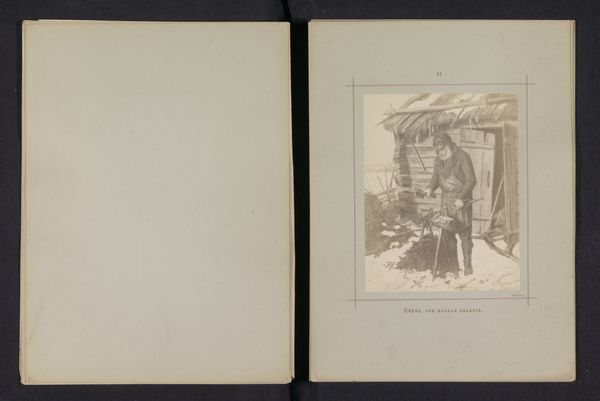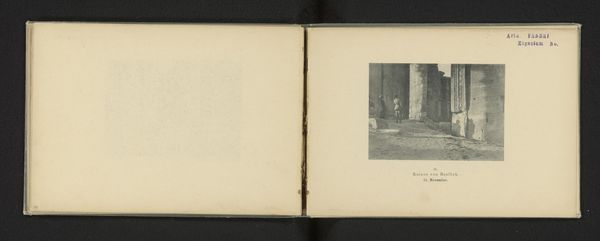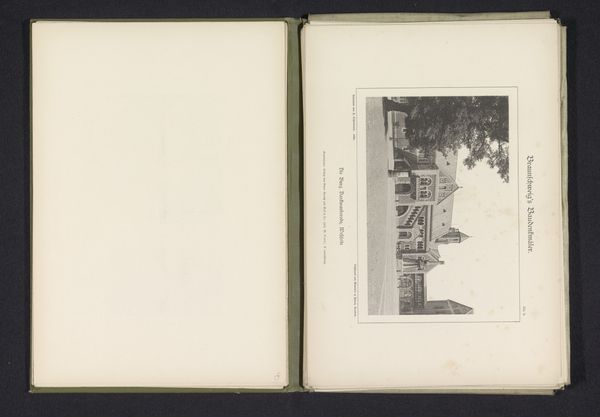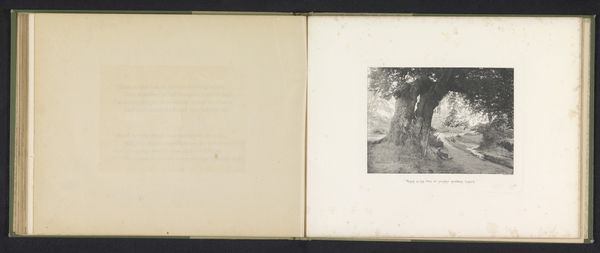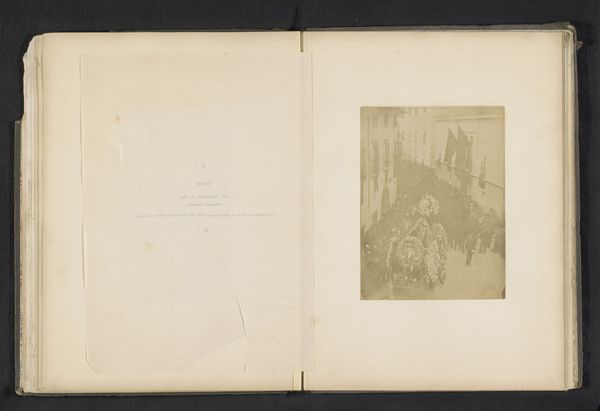
print, photography
#
portrait
#
aged paper
#
homemade paper
#
paper non-digital material
#
paperlike
# print
#
personal journal design
#
paper texture
#
photography
#
folded paper
#
letter paper
#
paper medium
#
design on paper
Dimensions: height 166 mm, width 113 mm
Copyright: Rijks Museum: Open Domain
Curator: Here we have a photographic print entitled "Portret van George V te paard" or "Portrait of George V on horseback," attributed to the National Photographic Co. and dated before 1898. What are your initial thoughts? Editor: It feels very staged, yet fragile. The tones are faded, the paper looks aged; almost like looking at a cherished memento tucked away in an old book. Curator: Indeed. Note how the photographer uses shallow depth of field, blurring the background architecture to focus our attention entirely on the figure of George V and his mount. This compositional choice emphasizes hierarchy, isolating him symbolically. Editor: What strikes me is the tangible labor behind this object. From cultivating the paper, to developing and printing the photograph, to the distribution and eventual housing within what looks like a personal journal design; each step represents hands, effort, and a whole chain of production processes largely invisible here. Curator: Precisely. The very materiality of the print communicates its own history. The slight sepia tone hints at the photographic chemistry used, while any imperfections in the paper itself reveal its handmade nature, countering the apparent refinement depicted in the subject. Editor: Consider also, the original context of consumption. Was this photography designed for widespread distribution, feeding into an imperial narrative, or made to be contained as an intimate keepsake within a private setting? And how would each placement shift its meanings? Curator: A fascinating question. One could even analyse the typographical choices: the use of small serif fonts versus sans-serif, reflecting either journalistic intent or personal annotation within that journal you observed, adding another textual layer that influences the way viewers experience the work as either official record or personal reflection. Editor: It speaks to photography's ability to both immortalize and be consumed, transformed from an official portrait into an almost folk-art object over time and within specific social circumstances. I feel like my view of this piece is in a constant state of change as a result of those dualities. Curator: A valuable thought to end on: perhaps, it’s the object's ability to accommodate multiple readings of its existence that truly constitutes it artistic worth.
Comments
No comments
Be the first to comment and join the conversation on the ultimate creative platform.
